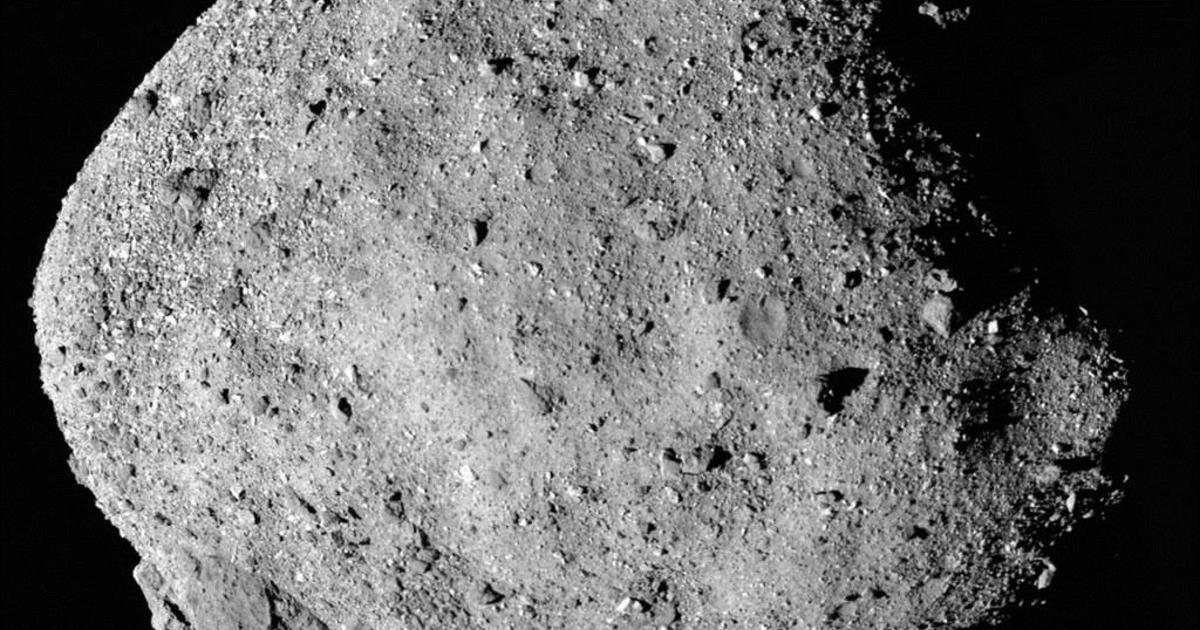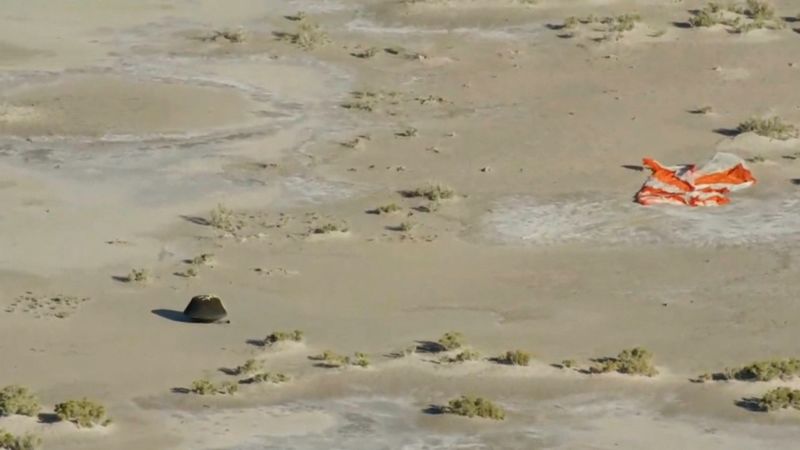NASA’s OSIRIS-REx spacecraft successfully completed its historic mission, bringing back the largest-ever soil sample collected from the surface of an asteroid. This gumdrop-shaped capsule, let out of the OSIRIS-REx mothership as it passed within 67,000 miles of Earth, dropped securely into the Utah desert, delivering a celestial treasure trove to scientists and space enthusiasts around the world.

Also Read: Nio Phone: Chinese EV Maker Launches its Maiden Smartphone
This exceptional accomplishment denotes the culmination of a six-year joint mission among NASA and the University of Arizona. OSIRIS-REx, short for Origins, Spectral Interpretation, Resource Identification, and Security-Regolith Explorer, embarked on its journey in September 2016, venturing into the depths of space to reach its destination – Bennu, a small, carbon-rich asteroid discovered in 1999.
Bennu, classified a “near Earth object,” orbits our planet every six years, making it a subject of both interest and concern.
Albeit the chances of a horrendous effect are viewed as remote, the potential outcomes are significant. Understanding Bennu’s composition and its potential for future Earth encounters is of paramount importance.
Bennu, with its size of only 500 meters (547 yards), may appear to be small compared with celestial giants, but it holds invaluable clues about the early solar system.
This rubble-pile asteroid, composed of a loose collection of rocks, is like a primordial relic frozen in time, with its chemistry and mineralogy largely unchanged since its formation 4.5 billion years ago.
Also Read: Apple’s iPhone 15 Goes on Sale in India and Around the World
Researchers are anxious to study on because it could provide insights into the origins and evolution of rocky planets like Earth. Its pristine state makes it a time capsule from the distant past, offering glimpses into the conditions that prevailed during the solar system’s infancy.
Bennu may even contain organic molecules crucial for the emergence of life, making it a potential key to unraveling the mysteries of life’s beginnings.
The significance of the OSIRIS-REx mission lies in its capacity to bring back a tangible piece of the cosmos. This mission addresses just the third attempt in history to return asteroid samples to Earth, and it stands apart as the most significant one to date.
The spacecraft’s robotic arm, designed with precision, gently scooped up a sample of the loose surface material from Bennu on October 20, 2020, marking a pivotal moment in space exploration.
The journey back to Earth was an incredible one, covering a distance of 1.2 billion miles, including two orbits around the sun. The capsule reappeared Earth’s atmosphere at a stunning 35 times the speed of sound, experiencing temperatures that soared to 5,000 degrees Fahrenheit (2,800 degrees Celsius).
Throughout this fiery descent, the capsule’s heat shield bore the brunt of the extreme conditions, ensuring the safety of its precious cargo.
Also Read: OpenAI Sued by George R.R. Martin And Other Prominent Authors
The OSIRIS-REx spacecraft got back with a sample assessed at 250 grams (8.8 ounces) of Bennu‘s surface material. This bounty of cosmic fragments far surpasses previous missions’ achievements, such as Japan’s Hayabusa2 mission, which brought back a mere 5 grams of material from asteroid Ryugu in 2020.
The bigger sample size promises a wealth of scientific discoveries awaiting researchers. Upon touchdown, a recovery team of dedicated scientists and technicians stood ready to retrieve the capsule and protect the sample from terrestrial contamination.
The capsule, safely transported by helicopter, arrived at a “clean room” at the Utah test range. Here, the precious contents will undergo initial examination and preparation for further analysis.
The next phase of this scientific odyssey will take place at NASA’s Johnson Space Center in Houston. On Monday, the capsule will be flown to the Johnson Space Center, where it will be opened on Tuesday.
This critical step will allow the samples to be divided into smaller specimens, which will be distributed to over 200 scientists in 60 laboratories across the globe.
Also Read: Neuralink Approved to Recruit Humans for Brain Implant






















